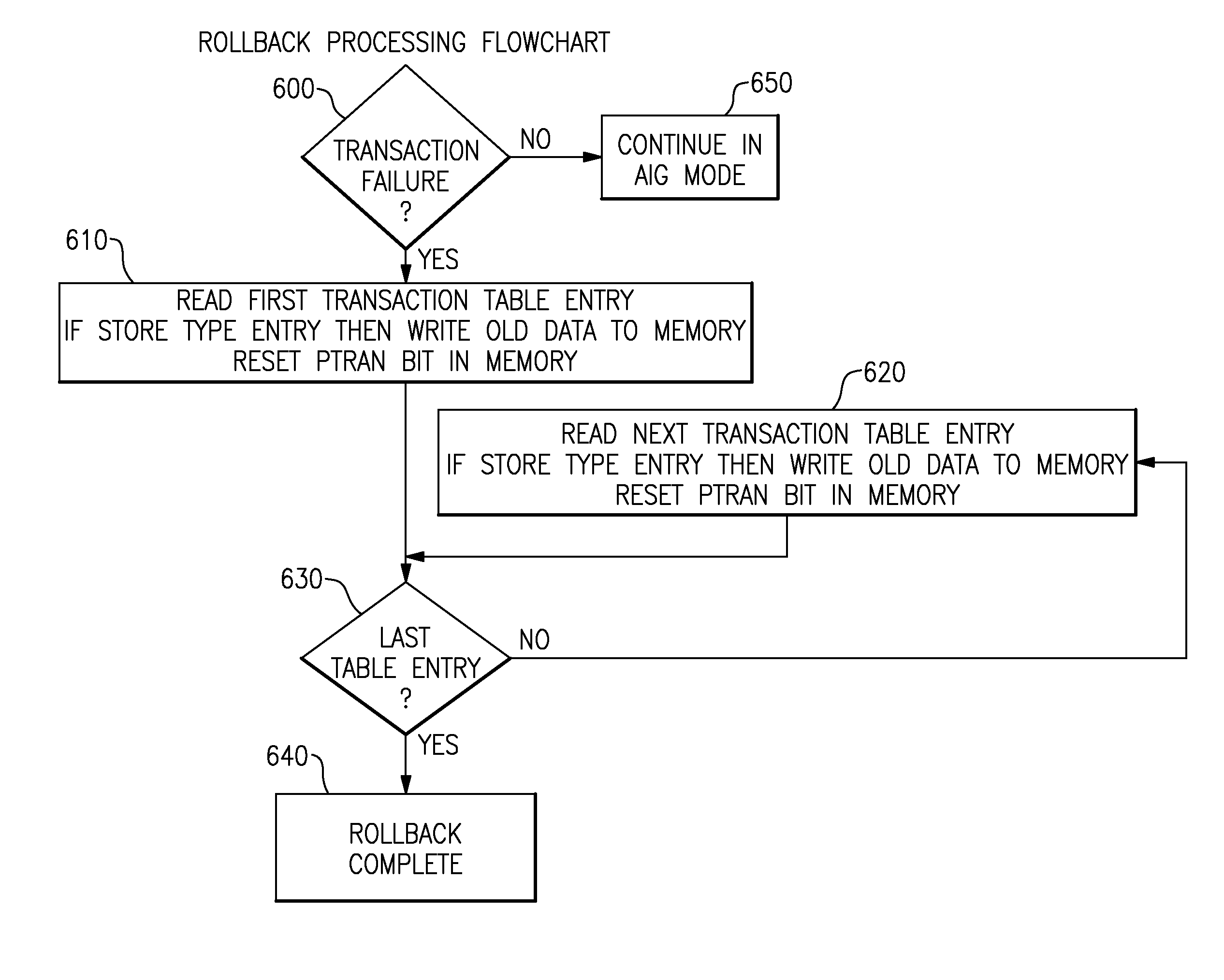Computing System with Transactional Memory Using Millicode Assists
a technology of transactional memory and assist, applied in the field of computer systems, can solve the problems of requiring expert programming skills, severely restricting the production of multi-threaded applications, and difficult writing high-performance multi-threaded programs using fine grained software locks, so as to achieve less overhead, reduce hardware complexity, and fast transactional memory system
- Summary
- Abstract
- Description
- Claims
- Application Information
AI Technical Summary
Benefits of technology
Problems solved by technology
Method used
Image
Examples
Embodiment Construction
[0040]The detailed description explains the preferred embodiments of the invention, together with advantages and features, by way of example with reference to the drawings.
[0041]Turning now to the drawings in greater detail, it will be seen that in FIG. 1 there is a computing system illustrating an embodiment of our invention which has one or more microprocessors (100,101,102) coupled to a physical memory array (120) via an interconnection element (110). The physical memory array stores transaction data (121) and “private to transaction” (PTRAN) tags (122) which are associated with every increment of real system memory. The interconnection element (110) can be implemented as a shared bus or crossbar switch. The invention applies to systems which use any other scheme of interconnecting physical memory to a multiprocessor system which may be implemented in one or more chips. The memory could be broken down into smaller portions and distributed across private connections to each of the...
PUM
 Login to View More
Login to View More Abstract
Description
Claims
Application Information
 Login to View More
Login to View More - R&D
- Intellectual Property
- Life Sciences
- Materials
- Tech Scout
- Unparalleled Data Quality
- Higher Quality Content
- 60% Fewer Hallucinations
Browse by: Latest US Patents, China's latest patents, Technical Efficacy Thesaurus, Application Domain, Technology Topic, Popular Technical Reports.
© 2025 PatSnap. All rights reserved.Legal|Privacy policy|Modern Slavery Act Transparency Statement|Sitemap|About US| Contact US: help@patsnap.com



